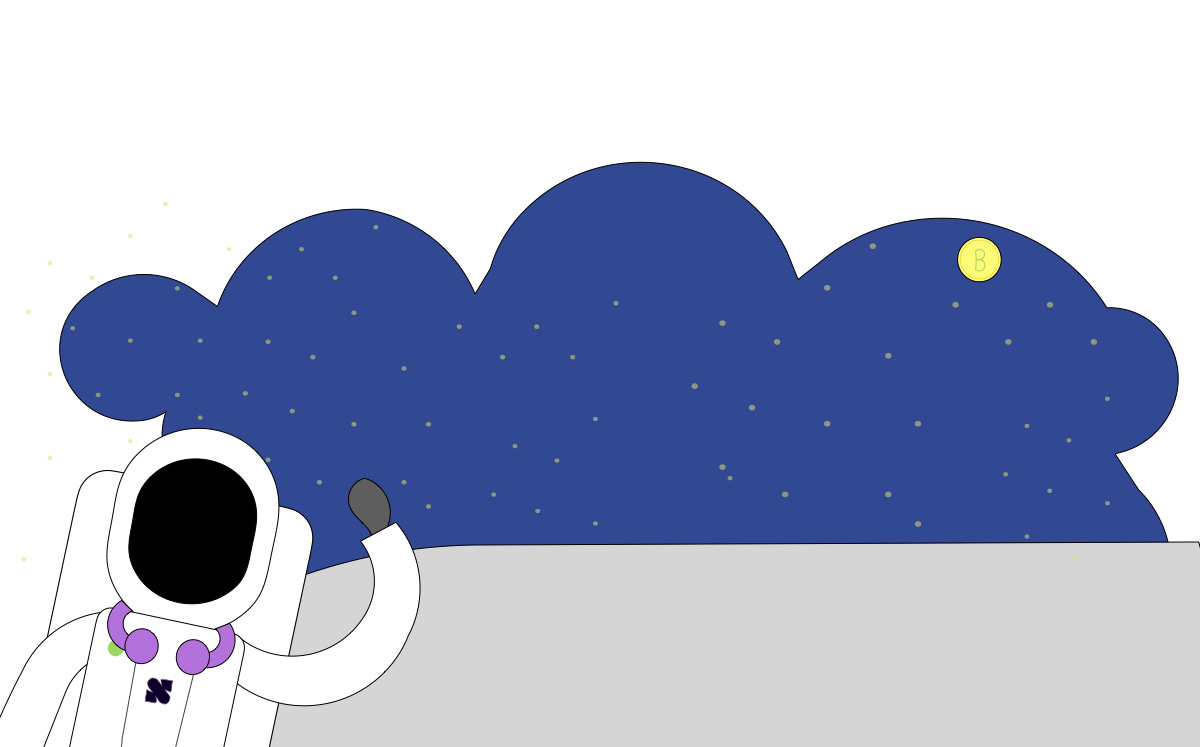Right now, you’re in an enclosed space—it’s eerily dark—when you hear a whoosh sound behind you. You’re startled but you’re also excited, giddy. This is it. This is the moment you've envisioned for a long time but were quite unsure how it would even be possible.
The door before you opens to unfamiliar terrain. Is that powder on the ground? Wait, why are there so many large holes on the ground? Why is the sky so black?
You squint.
You draw in a large breath; you had forgotten to breathe for a few seconds. You take several shaky steps forward, like an infant finding footing, feet sinking into what feels like quicksand.
Turning back briefly to glance at the spacecraft with which you landed, you grin. And then, you (attempt to) jump for joy!
You’re finally on the moon.
*snaps you awake from reverie.
My wildest fantasy aside, this is the Metaverse in a nutshell: an interactive and immersive network of virtual experiences.
But what makes it all the more unique is the presence.
In this reality, you can assume a digital identity and participate. You feel as though you’re actually there. It’s like a 5D-movie experience on steroids.
But, why would anyone want to create these augmented phenomena, like how Barbados plans to open a diplomatic embassy in the metaverse?
I’m glad you asked.
Wait—
It’s almost 6 months of writing to you every two weeks 🎉
And I’d love to hear from you — who you are, what are your interests, and what have you enjoyed (or otherwise) so far.
Please check out this quick 2-minute survey after reading. It’ll really help me a lot to improve this column. Thank you.
Alright, enough small talk.
Why a Metaverse?
The idea of the metaverse isn't a new one.
I came across this concept in Ernest Cline’s novel Ready Player One, a dystopian sci-fi novel based in the year 2045 where he alluded to an alternate and virtual reality where could, in essence, live: a parallel existence. Unfortunately, the “real world” had inadvertently gone to heck because it was mostly ignored.
But while fictional, perhaps, this is a thing that can happen.
So knowing that, why build this? What real-life problems does the Metaverse hope to solve?
The main rationale behind this technology is twofold: socialisation and e-commerce.
The experience of digital shopping will become more immersive and real-like: think Amazon’s introduction of the “AR room tool” to allow users to see how furniture would look in their house—but grander. Customers will be able to “walk” around the store, browse and make purchases all through the Metaverse.
Enthusiasts also believe this technology will change the way we socialise online, lost body language cues and wrong emojis aside.
Beyond a place to hang out, the Metaverse could be a game-changer for accessibility, if widely adopted. In education, for example, one can attend an augmented-reality-based class that isn’t even on their continent.
Perhaps these efforts became more apparent during the lockdown, such as Travis Scott’s in-game virtual concert with Fortnite—a key player in the Metaverse buzz—with over 12 million viewers.
Although gaming is its most prominent current use case, this Metaverse still doesn’t exist yet. Not fully.
Internet availability isn’t even widespread enough yet, not to mention advanced gear such as VR headsets.
But this isn’t even my biggest concern.
Go outside & touch some grass
“In nature, nothing is perfect and everything is perfect.” – Alice Walker
I can’t help but wonder what this means for the outside world as we know it. Current social media usage is already up to a third of our waking hours—you don’t even want to see mine— with no foolproof mitigating measures in sight.
Should we really become more invested in the digital?
The importance of real-life experiences, such as taking a walk or laying in the sun, can’t be overstated. As this research paper puts it, “spending at least 120 minutes a week in nature is associated with good health and wellbeing.”
However, I can’t help but imagine the exciting intersectionality this can bring. For example, imagine attending immersive classes or work meetings via the Metaverse, on a sunny day, while it’s really gloomy or snowing aside. As a medic, I wonder if this can provide some reprieve from the spectrum of seasonal affective disorder.
I guess I’m also just hoping we humans don’t mess this up; perhaps I’m too optimistic.
Nature, as we know it, isn’t utopian. While it’s rainbows and butterflies and sunny summer days, it’s also tornadoes and earthquakes and wildfires.
But as we can all agree, the positives grossly outweigh the negatives.
Will the same be said for the Metaverse?
Although the promise of this new technology is attracting the attention of big players such as Nike and Facebook, it still needs a lot of work.
There are technical challenges, such as making it interoperable across virtual worlds and platforms, and non-technical ones as well, such as legal and ethical aspects. After all, even with our current technology, we haven’t fully solved hate speech, addictive tendencies and downright scams.
Is this a fad or something that will reshape our existence as we know it, for the better?
What are your thoughts?
Oh & also:
Please don’t forget to check out the mini-survey. Thank you!






Well, like you said “the positive grossly outweighs the negative” balance is needed, as we are humans are eager to try out new things, we should also learn to how balance things. Thank you for this🤲🏾✨